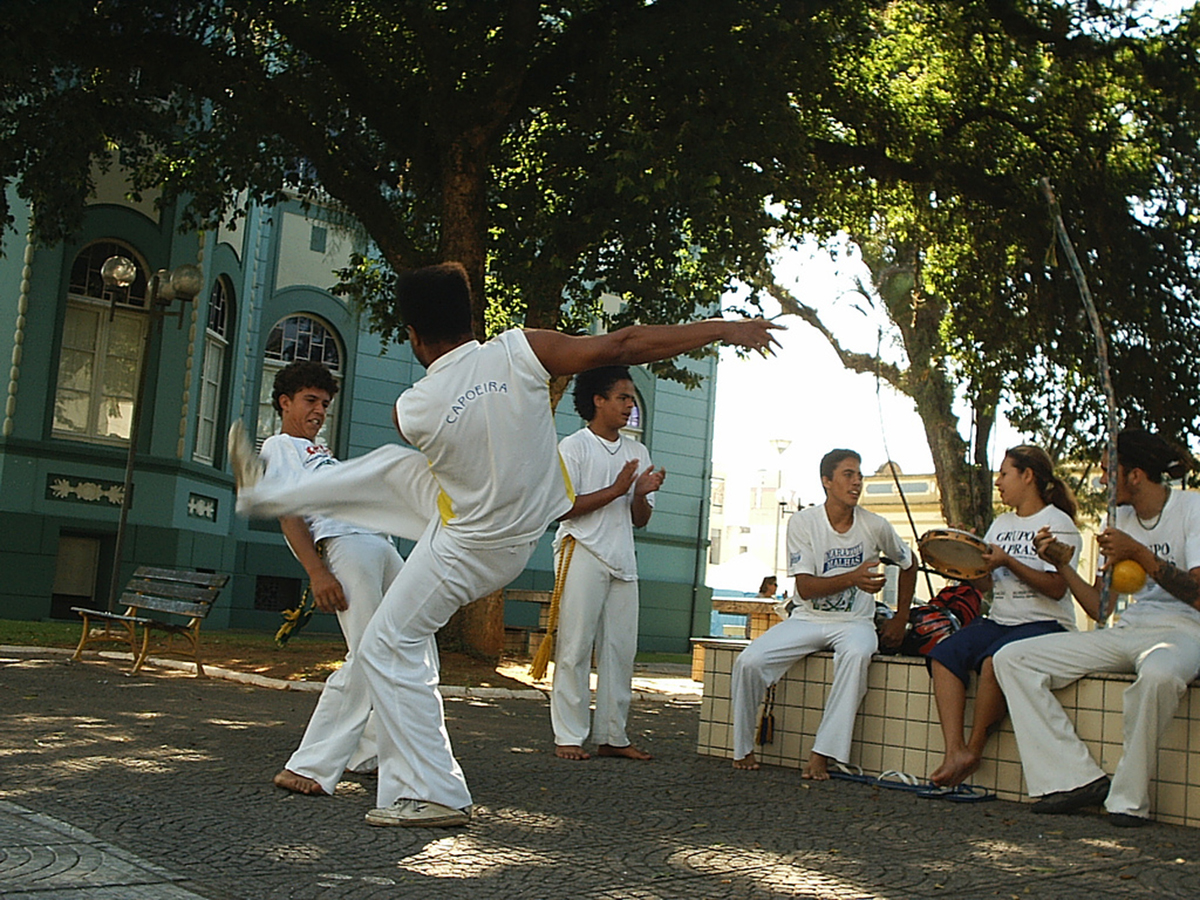Table of Contents
Styles Of Capoeira
Each master develops their own particular style. However, Capoeira can be divided into three broad styles: Angola, Regional, and Contemporary.

Capoeira Angola is a more traditional style of Capoeira. This style uses different speeds, and is played "lower" and "closer" than the other styles. Games last longer than the other styles' games, and ginga ("sway" — evasive maneuvers) is more improvised. Focused on strategy and ritual, this style also involves more musical instruments and songs. Capoeira Angola doesn't use colored cords to mark the skill level of players. You will find this style practiced by the International Capoeira Angola Foundation, Grupo de Capoeira Angola Pelourinho, and Capoeira Angola Palmares, Filhos de Angola, among others.
Capoeira Regional is a more contemporary method developed by Mestre Bimba in the 20th century. Players tend to be upright more, the movements are faster, and the games last for a shorter duration of time — around three minutes as opposed to the 10 minutes you'll find in Capoeira Angola. Its ginga is rhythmic, there is an emphasis on technique, and it uses a particular sequence. Fewer instruments are used. This style is practices by the Fundação Mestre Bimba among a few others.
Contemporary Capoeira or Capoeira Contemporânea has its roots in the 1960s. Its games have a faster pace and players are further apart. The focus is on technique, and flips may be part of the game. Ginga is standardized, but the instruments used variety rather a bit. Some Contemporary groups draw on elements of both Angola and Regional. This style uses colored cords to mark the skill level of players. This style is by far the most widespread in the western world.
What To Expect From Classes
Your kids will need loose clothing to practice Capoeira. In our group, players are barefoot. Players may wear uniform pants and t-shirts. Whatever your kids end up wearing, you have to remember that cartwheels and other movements that have them hanging upside down are part of Capoeira.
Classes will usually start with warm-up and stretching exercises. After that, games are played in the roda, a circle formed by the whole group with two players in the center. Each and every player gets multiple chances to practice and show their skills. Your kids will receive both direct instruction and learn from imitating other, more experienced players. Beginners will probably be separated from more advanced players some of the time, so they are able to receive more direct instruction. The atmosphere is friendly and non-competitive, and beginners are made to feel at ease.
See Also: How Active Play Can Boost Young Brains
Capoeira provides an accepting, comradely environment in which skills are fostered right alongside the relationships between members of the class. That and its multidisciplinary approach are the main benefits off this sport, which is highly enjoyable. Don't let the visually-pleasing aspects of Capoeira fool you, however: this sport isn't just about looks, it provides self-defense skills too. While the Capoeira classes your kids may end up in are not violent in any way, just Google "Capoeira knock-out" to get an idea of what well-trained adults can achieve with Capoeira moves.
- Photo by Olivia Maloy/SteadyHealth
- Photo courtesy of Jelena Aleksic
- Photo courtesy of emarquetti via Flickr: www.flickr.com/photos/emarquetti/61304164


Your thoughts on this